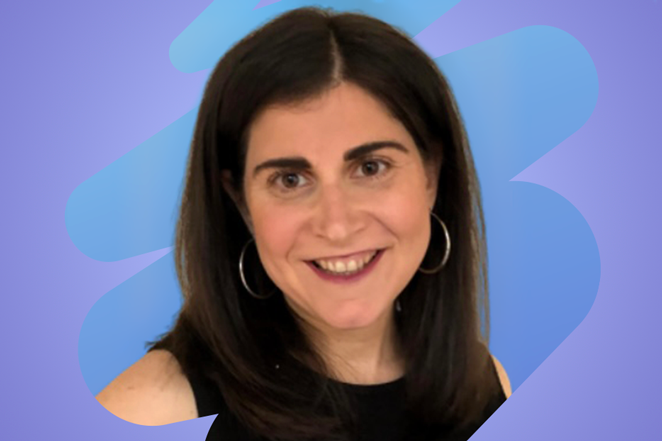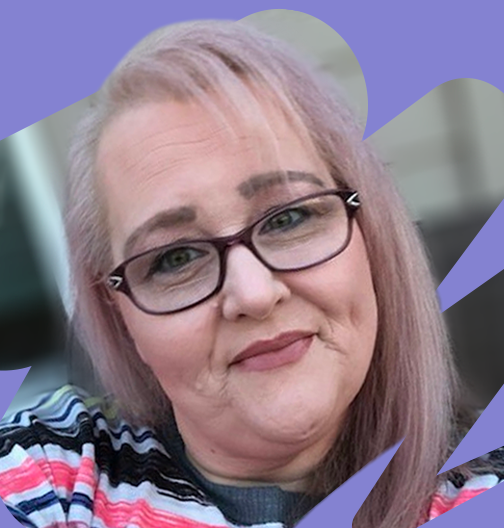“I am motivated to be a person that is… a safe place and a loving place where they feel comfortable and confident… exploring, learning new things, and trying things that are hard.”
Erin Schwab, Virtual Instructor

April 12, 2022 9:30 am
In an increasingly virtual world, online instructors find ways to establish deep connections with students as they support them in reaching their goals.
A first grader tells the class about a tooth that she not only lost but swallowed; a fifth grader blossoms when she’s encouraged to incorporate her artwork in her assignments; with some extra help, a second grader progresses from reading below to reading at grade level — all with the support of a teacher whom they’ve never met in person. Online instruction might sound impersonal, but Imagine Learning Instructional Services’ virtual instructors create connections through special moments just like a teacher would in a physical classroom. As Tracy Regula, an elementary instructional supervisor, puts it, “the bonds [between teacher and student] go beyond the screen.”
“I am motivated to be a person that is… a safe place and a loving place where they feel comfortable and confident… exploring, learning new things, and trying things that are hard.”
Erin Schwab, Virtual Instructor

These special bonds are what keep our virtual teachers logging in day after day. “Not all days are easy… and all teachers know that, whether you’re brick and mortar or virtual,” but K–5 teacher, Erin Schwab is motivated to “be a person that is… a safe place and a loving place where they feel comfortable and confident… exploring, learning new things, and trying things that are hard.” Fellow K–5 teacher, Diamond Singh loves watching her students learn and is energized by the “ah-ha” moments when she can visibly see “the moment when they get it.”
Lightbulb moments like these are part of multiple-subject teacher, Kathryn DeGioia’s “why” — the reason she became an educator. She also acknowledges the impact her own teachers had on her and wants to “pay it forward” by getting her students excited about learning. Being inspired by teachers seems to be a common thread among current educators, as secondary Spanish teacher, Debra Allison comments, “I want to empower my students. I want to give them all those great feels that I received when I was a student.”
While a lot of teachers are inspired by educators from their past, there are also plenty of less traditional routes to the career. Tracy struggled in school, but it was watching her daughter experience similar difficulties that inspired her to look for a way to help “students learn to their fullest ability.” Secondary science teacher, Dr. Kettyah Chhak had maybe an even less traditional path, starting as a scientific researcher. She responded to a need for math and science teachers, thinking it would be nice to try something different for a couple years. But after a year of teaching, she was “hooked.”
This variety of backgrounds is so valuable, especially because of the varied reasons why students pursue an education online. From student-athletes to those who have a medical need to those who need to make up credits for graduation, virtual instruction allows students to achieve all their goals. “Our students just have such a wide variety of backgrounds and reasons why they’re doing online,” remarks Kettyah, “so I try not to make any assumptions ever… I find I learn so much more about my students that way.”
“It awakened me as a person, [thinking] ‘Who are these students and why are they using this platform? And how can I help them?’ All of that is just so invigorating.’”
Debra Allison, Virtual Instructor

Debra sees the diversity as a welcome challenge: “I mean, yes, I teach Spanish, [but] I can really be teaching anything — I’m really teaching the students… Here at Imagine Learning our students are so varied. It awakened me as a person, [thinking] ‘Who are these students and why are they using this platform? And how can I help them?’ All of that is just so invigorating.
Heterogeneity is definitely not exclusive to the virtual classroom, nor are the tasks that make up a virtual instructor’s daily to-do list: responding to emails, meeting with students, grading, grading, and more grading. What is unique to the virtual classroom is the flexibility for both student and teacher. The varied reasons for choosing to learn virtually often come down to a need for school to adapt to their schedule, not the other way around. While this adaptability is convenient for students, it becomes powerful for teachers, as they have the ability to rearrange their day to focus on the students who need extra support at that moment. Debra finds that she is able to be the best teacher for each of her students because she can focus her time “where it really matters most.”
The ability to focus on the individual student is why, though it might seem unlikely, the student-teacher relationship can still flourish in a virtual environment. Tracy said that this was one of her worries when transitioning to teaching virtually, if she would be able to create the same type of bonds with her students that she did face to face. What she found, actually, is that it is possible and “those bonds might even be a little bit stronger” than when she was teaching in person. She credits this to the focus she can give to individuals. While she was able to meet with students one-on-one when teaching in person, Tracy remarks that she was always keeping one eye on the rest of her class. But “you don’t have to do that in the virtual world. And so, you’re really able to give them all of you, instead of part of you.”




One of the tell-tale signs of a meaningful teacher-student connection is when former students drop by to visit their past teachers. These visits reinforce the bond and also let teachers see the fruits of their labor as they learn how their student is continuing to thrive as they move through school and life. These drop-ins may seem impossible in the virtual classroom, but Kathryn says that’s not actually the case. She has a student who is no longer in her class who “periodically emails [her saying], ‘How are you?’ and ‘I miss you’ and ‘Thank you so much for all your help, last year. I don’t think I would have passed fourth grade last year if you hadn’t helped me.’ and it’s just sweet. In a brick-and-mortar school, these would be the students who stopped in your classroom.”
In both the physical and virtual worlds, it is all about our connections with others. The bond a student feels with their teacher can be the difference that inspires them to succeed — and for our virtual teachers, these bonds extend far beyond the computer screen.
Whether you are new to the virtual classroom or an experienced online teacher, here are a few tips for success with virtual learning.